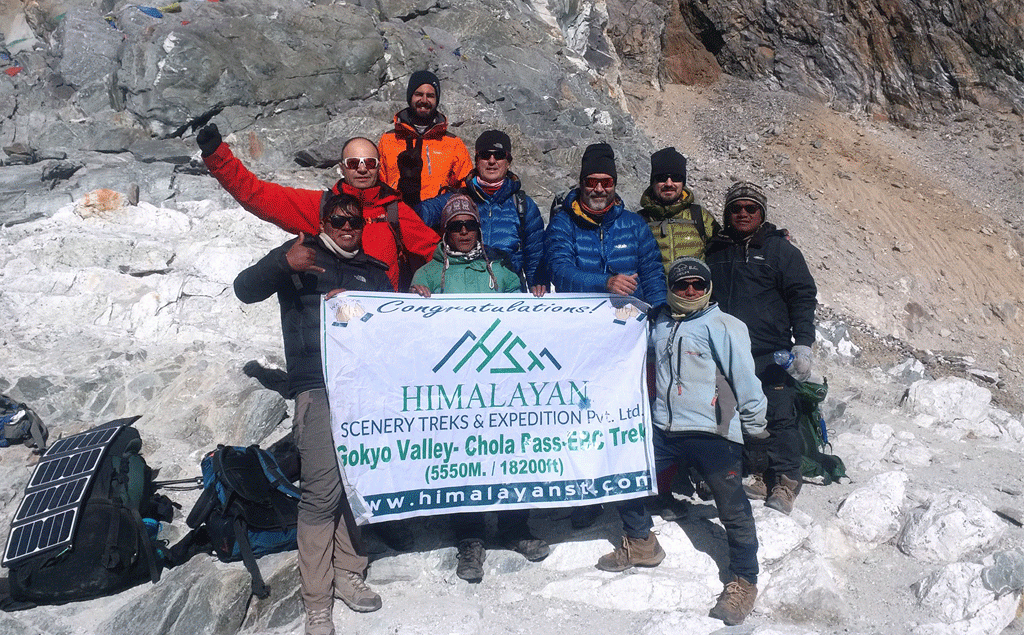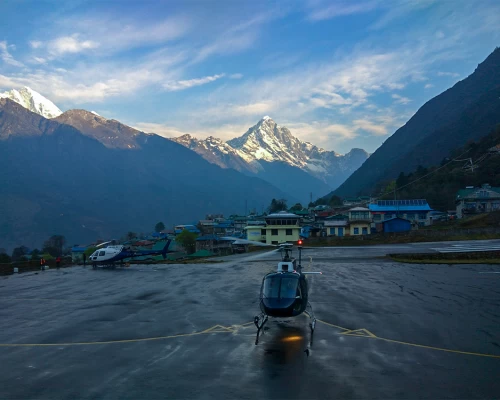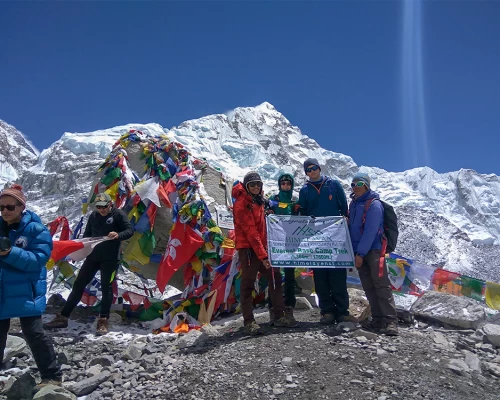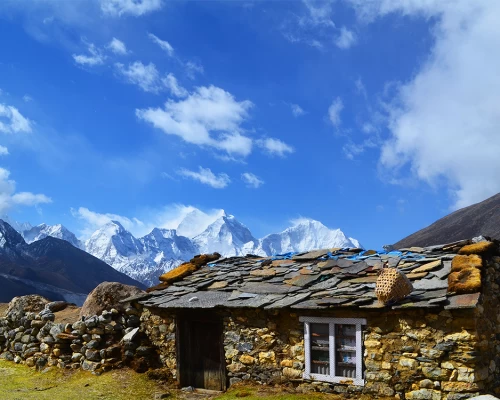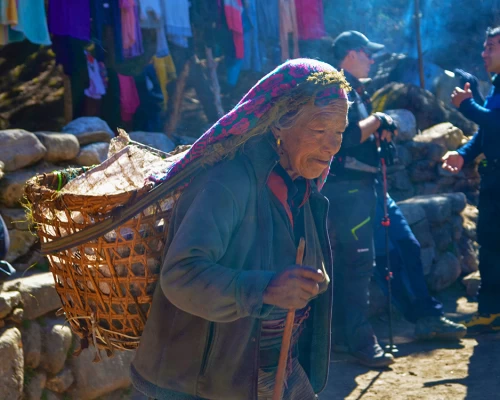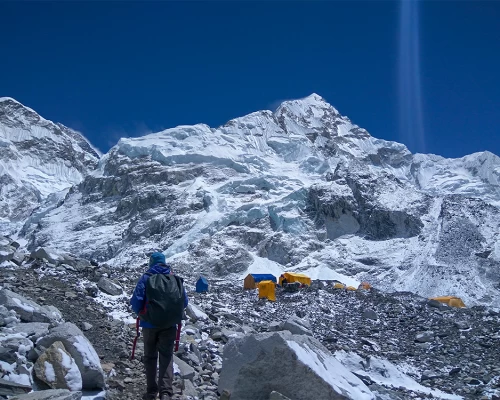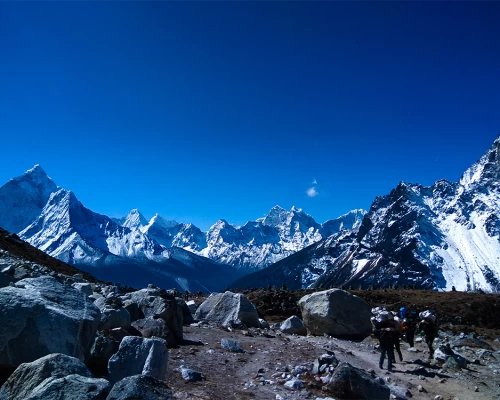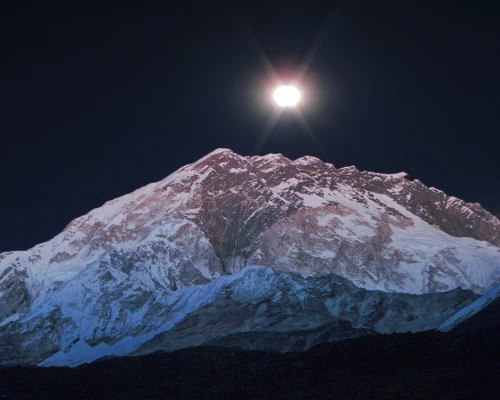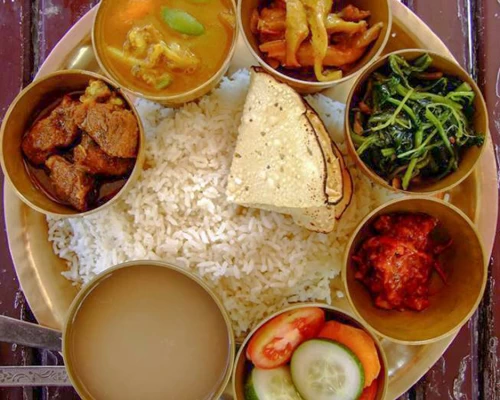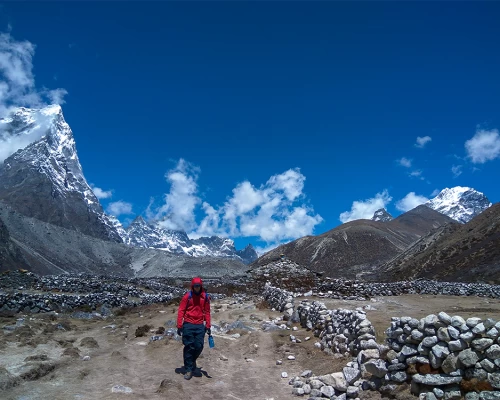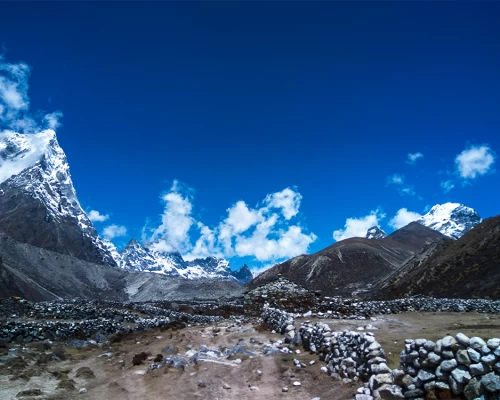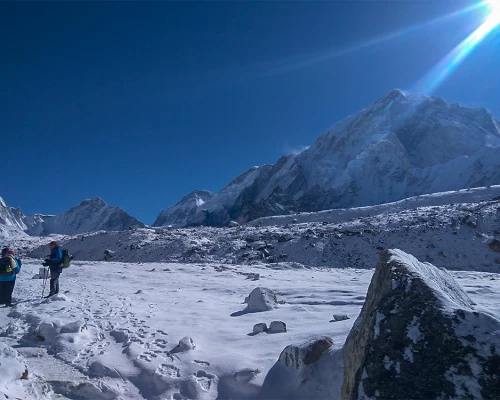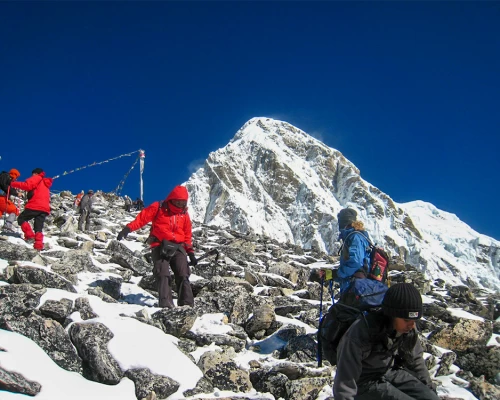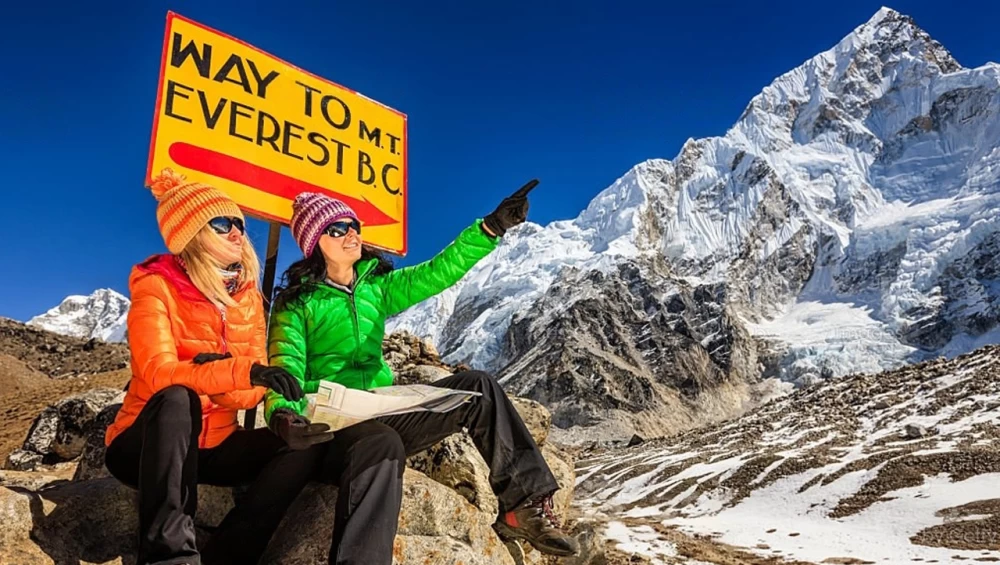An adventure trekking to Everest Base Camp and Gokyo Lakes with Cho La pass is a trip that gives you a thrilling adventure of a lifetime. This challenging hike in the Himalayas involves admirable views of the pristine lakes, high soaring mountains, impressive glaciers, and the base of the highest mountain in the world and involves a high Himalayan pass crossing.
This epic trip follows the classic trail to reach the base camp of Mount Everest and the hike to a minor snowless peak Kala Patthar for amazing views of the top of the world. The trek then moves towards the Gokyo Lake system, the high-altitude lake system comprising six turquoise lakes. To reach Gokyo, we will pass through Cho La Pass, the highly sought-after Himalayan pass among trekkers. In addition to the beauty of Gokyo lakes, we will also enjoy Ngozumpa glacier and the trek to Gokyo Ri, a vantage point that provides an unparalleled view of the peaks. After our detour to Gokyo, we will meet the main trail at Namche Bazaar.
The best thing about this trip is that you need to add just a few extra days to your itinerary. Compared to the classic EBC trek that will complete in 15 days, 18 days of the journey will take us to a relatively less-travelled and unspoiled trekking route and amazing vistas. Double the fun for 3 extra days.
NOTE: We recommend that you arrive in Kathmandu a few days earlier before you start the trek. Since the day of the trek starts with a flight, albeit a short one, it gives you a chance to get over jet lag and rest before the trek starts. It will also provide you with enough time to double-check your gear and shop for anything you might have missed.
What to expect from the trek to Gokyo Lake via EBC?
The Everest base camp trek in itself is an amazing trip that attracts a lot of trekkers worldwide. Add to this, the detour to picturesque Gokyo Lakes, it becomes a trekking route really hard to beat. This trek is a true testament to the beauty of the Himalayas and to your own willpower.
The trek is an example of the lodge-to-lodge trekking style that appeals to adventure-seeking individuals. You will spend your time enjoying the majestic views of the Himalayan landscape and a warm Sherpa hospitality that will never become old. Every day, you will trek for 6 to 7 hours in the beautiful mountainous terrain giving it your everything. For your efforts, this trek will not cease to award you in one way or another.
- A classic Himalayan trekking route with breathtaking views
- Multiple incredible viewpoints to watch Everest and other peaks: Kala Patthar, Cho La Pass, Gokyo Ri, and more.
- Take in the beauty of Gokyo Lakes, a crystal clear lake system tucked between the mountains
- Pass through the challenging and rewarding Cho La Pass to reach the lakeside settlement of Gokyo
- Enjoy the hospitality and delicacies of the local Sherpa people
- Learn about the history of the Khumbu region and mountaineering in Nepal
- Listen to the mountain fables from the local people from local guides
- Drink at the highest Irish pub in the world in the famous Himalayan town of Namche Bazaar
Should I attempt this trek?
Yes. If you consider yourself to have moderate fitness and are somewhat physically active, you can complete this trek with no issues. The challenge that this trek possesses is what makes completing the trek sweet. All you need for this trek is a little physical and mental preparation.
However, you should have access to the following information before you decide to embark on this journey. Upon reaching EBC and Gokyo lakes and returning to Lukla, you will walk for 14 days, including two acclimatization days. On the average trekking day, you will walk for up to 8 hours. The difficulty for this trek is right up there with some of the most challenging treks.
This trekking package involves reaching the base of Everest and taking a detour to the Himalayan lake system of Gokyo via the Cho La Pass. You will encounter steep climbs, rugged terrain, unpredictable weather, and so on. In addition, you will be braving the challenges with a backpack and also battling the symptoms of altitude sickness at the same time. So, if you think you might not be ready for this trek, you can start with a less strenuous trek.
How do I prepare for the Gokyo Lake trekking?
The trek to Gokyo Lakes via EBC is a challenging one physically and mentally. Embarking on this journey without preparation is dangerous and can even be life-threatening at times. Physical exhaustion, lack of gear, altitude sickness, and exposure to weather are some of the challenges you will be facing on a daily basis. So, it’s vital to prepare beforehand before attempting the Gokyo Lakes trek.
The preparation for trekking to Gokyo Lake starts with physical preparation. You should start with a regimen that focuses on cardiovascular exercises, strength training, and endurance training. Workouts like walking, hiking, running, and cycling for 30 minutes a day will build up your cardiovascular endurance. You can also incorporate squats, deadlifts, and lunges in your routine in order to increase strength for the trek.
If possible, engaging in outdoor activities like hiking, backpacking, and long walks on varied terrain will help prepare for the trek. Practice carrying the backpack and using the gear that you have bought for the trek.
Using the gear beforehand will help you adjust to them. If any of the gear is inappropriate for you, you can exchange it for something that better fits you, so that, you won’t get blindsided during the trek itself. Proper gear will help you battle the uncertain weather while trekking to Gokyo Lakes. There’s nothing frustrating like busting the walking poles on a day of strenuous hiking.
Packing for this trekking requires attention to detail. There are risks of underpacking or overpacking, which are both not good situations to be in. Check out our guide to pack for Everest base camp which is the same for this trek as well.
